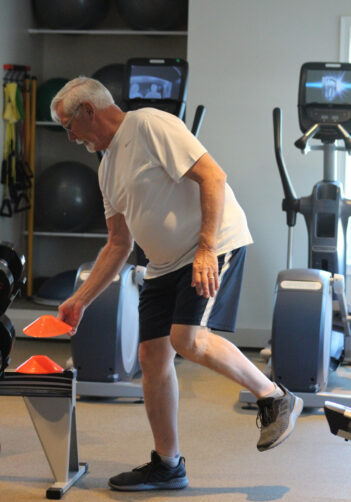Commentary by Tom Weesner
In our early adult years, we often struggled with balance. We asked, “How can we get everything done and balance what is really important in life?”

Webster’s Dictionary’s first definition of balance fits this early part of our life: “Striving to have different elements in the correct proportions.” Whether it was our careers, family, bills, or volunteering, balancing priorities when we were young was challenging.
When we reach our retirement years, we have our proportion balance of time figured out – activities with children and grandchildren, hobbies and serving others. Now, Webster’s second definition of balance becomes relevant: “An even distribution of weight allowing one to physically stay upright and steady.”
We again start struggling to keep our balance – only this time, it is our physical balance. We have less mobility and strength, yet here we are, with time for the grandkids and hobbies, and we don’t feel our best. We work hard our whole life, striving to balance time for what is really important, only to have a new challenge arise — our physical balance.
There is good news! We can create better physical balance for our bodies.
According to Dr. Carol Weesner, medical director at Motion 4 Life Fitness, “Despite the many age-related changes that contribute to balance and mobility issues, growing evidence suggests we can reverse, or at least slow, the rate of decline. Proper exercise as a stand-alone strategy has shown improvements in balance and mobility and reduction in fall risk and fall incidents for older adults.”
The National Association of Sports Medicine states, “Early in life, your eyes, ears, muscles, brain and nerves learn to work together to keep you upright and steady on your feet. But with age, balancing skills tend to become less dependable, especially if you don’t use them regularly. Staying physically active can help you keep your balance as you age by keeping your nerves, muscles and reflexes in good working order.”
Weesner agrees and emphasizes, “Many falls are preventable. A balance assessment, physical activity program and home safety modifications have been shown to significantly lower fall risk and incidents.”
Life is like riding a bicycle. To keep your balance, you must keep moving. Rumi, the 13th-century poet, stated, “Life is a balance of holding on and letting go.” Schedule a balance and gait assessment today, so you can let go of your physical balance fears and hold on to your grandkids a little tighter.”
Tom Weesner is the president of Motion 4 Life Fitness




